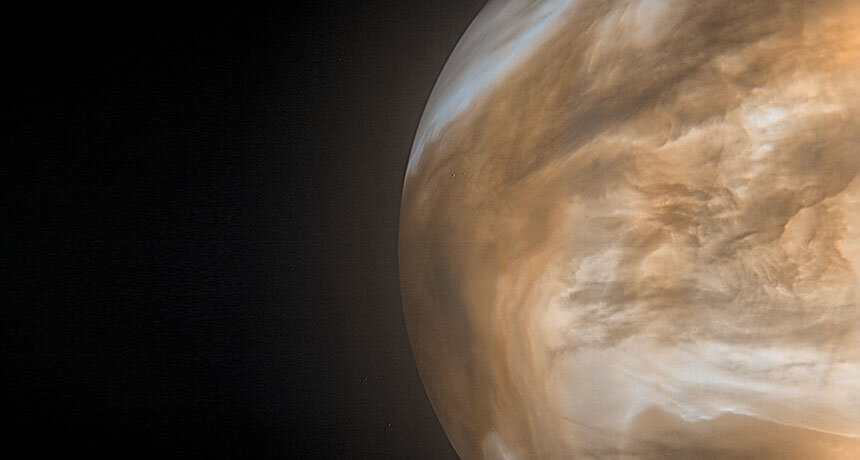A study suggests that the potential phosphine present in Venus’ atmosphere might just be ordinary sulfur dioxide. Thus, the “greatest scientific discovery in history” will still await.
In mid-September, a team Advertise They discovered phosphine in Venus’ upper atmosphere. The advertisement made headlines. And with good reason, on our planet, we know that these molecules can be produced by anaerobic bacteria. Since this announcement, other studies have questioned the reliability of this potential discovery. One of them is led by the University of Washington in cooperation with researchers from NASA, And concludes Today that the so-called phosphine … was not.
A signal that triggers confusion
Each chemical compound absorbs unique wavelengths in the electromagnetic spectrum. Then astronomers analyze it to find out more about the chemical composition of the atmosphere, for example. As part of his studies, the first team announced Detection of a 266.94 GHz spectral signal in Venus’ atmosphere.
You should know that phosphine and sulfur dioxide, another compound likely to be found on Venus, absorbs radio waves close to this frequency, and then question researchers.
To distinguish between the two compounds, the team made follow-up observations using the Atacama Large Millimeter / Sub-Millimeter Array, or ALMA. Next, analysis of ALMA observations at the frequencies corresponding to SO2 led the team to conclude that Levels of sulfur dioxide on Venus were too low to account for the detected signal. Therefore, it must have come from the phosphine instead.
As part of this new study, researchers have begun modeling conditions in Venus’ atmosphere based on decades of observations. They then used this basis to comprehensively explain the observed and unobserved characteristics in the ALMA datasets.

Ordinary sulfur dioxide
The team used this model to simulate signals of phosphine and sulfur dioxide at different levels in Venus’ atmosphere and analyze how these signals are captured by ALMA in their formations. Based on the shape of the signal, the researchers first indicated that the absorption was not from the Venusian cloud as reported by the first team.
Rather, the observed signal It comes from the average atmosphere of Venus, 80 km above the surface. However, at this altitude, harsh chemicals and UV rays It will destroy phosphine particles in seconds According to the researchers.
They also found that the ALMA data were It dramatically reduced the amount of sulfur dioxide in Venus’ atmosphere. “The formation of the ALMA antenna at the time of the 2019 observations had an unwanted side effect: signals from gases that are almost everywhere in Venus’ atmosphere, such as sulfur dioxide, emit weaker signals than gases distributed on a smaller scaleThis phenomenon is known as spectral line attenuation, “confirms Alex Akins of NASA’s Jet Propulsion Laboratory.
In conclusion, the authors note that sulfur dioxide might not only explain the observations made at the start, but these results also align with what astronomers know about the planet’s atmosphere that includes clouds of sulfuric acid. Finally, remember that sulfur dioxide, the third most common chemical compound in the atmosphere of Venus, is not. It is not considered a sign of life.

“Proud thinker. Tv fanatic. Communicator. Evil student. Food junkie. Passionate coffee geek. Award-winning alcohol advocate.”


